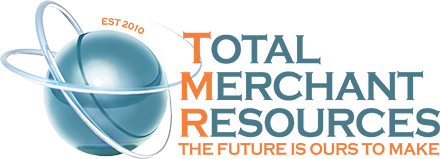
Securing the right equipment is essential for our business to operate smoothly and efficiently. Whether we need new machinery, updated technology, or specialized tools, having the right equipment can make a big difference. Equipment leasing offers a great solution for small businesses looking to get the necessary equipment without a large upfront cost.
Equipment leasing provides several benefits. It allows us to access the latest equipment without depleting our cash reserves. This means we can maintain our cash flow and invest in other important areas of our business. Additionally, leasing often comes with flexible terms, making it easier for us to manage monthly payments.
Getting started with equipment leasing might seem overwhelming, but it’s a straightforward process if we know the steps to take. From understanding the benefits of leasing to preparing for the application, each step is essential to secure the right equipment for our business. By following a clear process, we can ensure that we choose the best leasing options that fit our needs and budget.
Let’s explore how we can make equipment leasing an easy and beneficial process for our small business.
Understanding Equipment Leasing and Its Benefits
Equipment leasing allows us to use the latest technology and tools without having to buy them outright. Leasing is essentially renting equipment for a specific period, with regular payments made throughout the lease term. Here are some key benefits of equipment leasing:
- Cost Savings: Leasing helps us avoid the high upfront costs associated with purchasing new equipment. This keeps our cash flow stable and allows us to invest in other areas of our business.
- Access to Up-to-Date Equipment: Leasing enables us to use the latest and most efficient equipment without the risk of owning outdated tools. We can upgrade to newer models at the end of the leasing term, ensuring our operations remain competitive.
- Tax Advantages: Lease payments can often be deducted as a business expense on our taxes. This reduces our taxable income and saves us money.
- Flexibility: Leasing offers flexible terms and payment options, making it easier for us to manage our finances. We can choose a plan that fits our budget and operational needs.
By understanding these benefits, we can see how equipment leasing can be a strategic choice for growing our business while maintaining financial stability.
Preparing for the Equipment Leasing Process
Preparation is key to a successful equipment leasing experience. Here are the steps we should take to prepare for the leasing process:
- Assess Our Needs: Determine what equipment we need and how it will benefit our business. Consider factors like the type, size, and specifications of the equipment. Knowing our needs helps us choose the right leasing options.
- Review Our Finances: Check our financial health, including our credit score, cash flow, and current debt levels. A strong financial position can improve our chances of securing a favorable lease.
- Research Leasing Companies: Not all leasing companies are the same. Research and compare different companies to find one that offers the best terms and has a good reputation. Look for transparency in their terms and conditions.
- Gather Documentation: Leasing companies will require documentation such as financial statements, tax returns, and business plans. Prepare these documents in advance to streamline the application process.
- Consult an Advisor: If we’re unsure about any part of the leasing process, consulting with a financial advisor can provide valuable insights and guidance. They can help us make informed decisions based on our specific circumstances.
By taking these steps, we set ourselves up for a smooth and successful equipment leasing experience that benefits our business in the long run.
Steps to Apply for Equipment Leasing
Applying for equipment leasing involves a few straightforward steps. By following these steps, we can make the process smooth and increase our chances of approval.
- Submit an Application: Start by filling out an application with the leasing company. This will typically include details about our business, financial health, and the equipment we want to lease.
- Provide Financial Information: The leasing company will require financial documents such as tax returns, profit and loss statements, and balance sheets. Having these documents ready speeds up the process.
- Equipment Selection and Vendor Approval: Choose the equipment we want to lease and get a quote from the vendor. The leasing company usually needs to approve both the vendor and the equipment specifications.
- Review Lease Terms: Carefully review the proposed lease terms, including the payment schedule, interest rates, and any additional fees. Make sure we understand all aspects of the agreement before proceeding.
- Sign the Lease Agreement: Once we’re comfortable with the terms, sign the lease agreement. The leasing company will then purchase the equipment from the vendor and lease it to us.
- Set Up Payments: Arrange the payment method for our lease. Ensure we keep up with payments to maintain a good relationship with the leasing company and avoid any penalties.
By completing each of these steps, we can secure the equipment we need while maintaining financial health.
Making the Most of Your Equipment Lease
Getting the most out of our equipment lease involves more than just obtaining the equipment. Here are some tips to maximize the benefits of our lease:
- Regular Maintenance: Keep the equipment in good working order by following a regular maintenance schedule. This ensures optimal performance and avoids costly repairs or downtime.
- Train Employees: Properly train our staff on how to use the equipment. Well-trained employees can operate equipment more efficiently and safely, which enhances productivity.
- Monitor Usage: Keep track of how the equipment is being used. Monitoring usage helps identify any issues early and ensures the equipment is being used effectively.
- Review Lease Terms Periodically: Periodically review our lease terms to ensure they still align with our business needs. If our situation changes, we might explore options to upgrade or adjust our lease agreement.
- Plan for Renewal or Upgrade: As the end of our lease term approaches, start planning whether we’ll renew the lease, purchase the equipment, or upgrade to newer models. Being proactive helps us avoid disruptions in our operations.
By following these practices, we can make the best use of our leased equipment and ensure it adds maximum value to our business.
Conclusion
Equipment leasing offers a practical and cost-effective way for small businesses to access the tools and technology they need to grow. By understanding the benefits and preparing properly, we can navigate the leasing process smoothly. Applying for a lease involves a few key steps, and making the best use of the equipment involves proactive management and planning.
Securing the right equipment can drive our business forward, providing the efficiencies and capabilities needed to stay competitive. It’s important to choose the leasing options that best fit our needs and to manage the equipment wisely.
If you’re ready to explore equipment leasing for your business, reach out to Total Merchant Resources. Our team can help you through the process and find the best leasing options to support your business goals. Contact Total Merchant Resources today to get started!



